The great rulers of India exude royal opulence and their majestic presence resonate in these incredible attractions.
India’s extensive history, adorned with the opulence of the nation’s royalties, continue to evoke fascination in our modern day and age. Get a glimpse of the sheer beauty and cultural significance of these celebrated landmarks.
Amer Fort
A priceless treasure for its superb architecture, Amer Fort, also known as Amber Fort, was once the stately address of Rajput rulers. Today, its known as a UNESCO World Heritage site along with five other prominent hill forts in the region.
Made from natural materials that include sandstone and marble, Amer Fort has vast courtyards, palaces, temples, and gardens tucked within its imposing walls. Royal soldiers of the ruling emperors frequently assembled and paraded in its immense grounds while courtiers prayed inside the temples and mingled at the courtyards. Two of the most frequented parts for tourists are the Diwan-e-Khas or Hall of Private Audiences that feature elaborate marble designs and the Sheesh Mahal or Hall of Mirrors, which have walls made of intricate mirror work.
A magnificent time at Amer Fort culminates in the sound and light show that happens at night. Many visitors stay for this highlight, so it’s best to maximise your visit and experience the breathtaking spectacle.
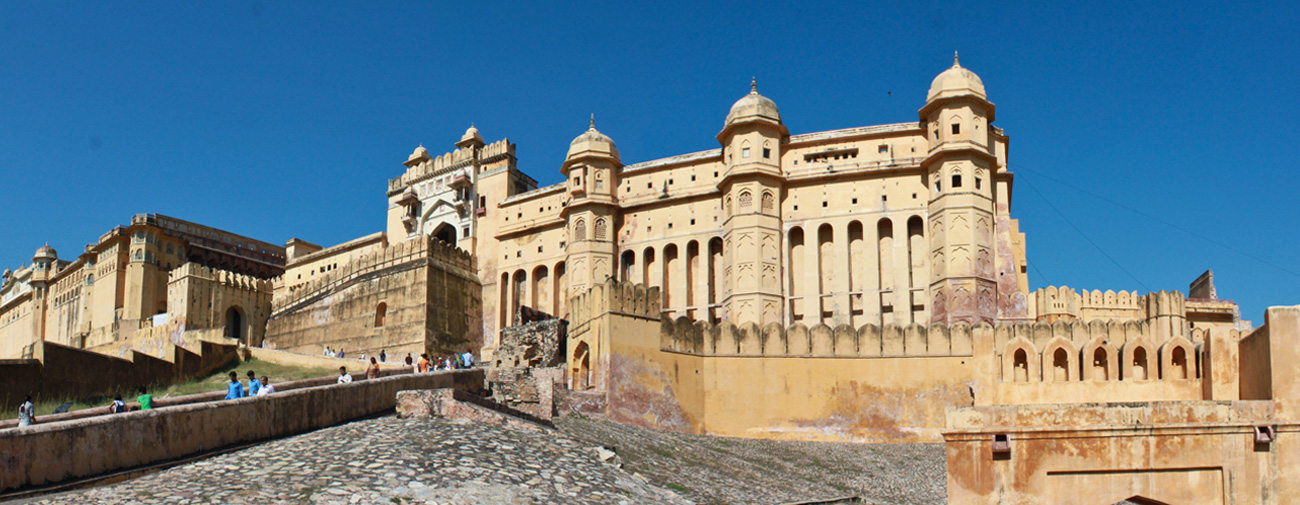
Amer Fort is one of the prominent hill forts in the entire Rajasthan.
Mehrangarh Fort
The mighty Mehrangarh Fort, looming on top of a hill in Jodhpur, has incredible history deep within its walls. Across its five-kilometre stretch, seven gates represent the different rulers who’ve taken control of the immense stronghold and their victories over opposing armies.
Its foundation solidified in the time of Rao Jodha, then-ruler of present-day Rajasthan. It was his vision to forge a fortress on top of this majestic hill, which is now a symbol of chivalry from the olden times.
Some parts of the fort’s royal grounds have been turned into the Mehrangarh Museum. Antique collections, paintings, and artefacts are included in the showcase. Visitors exploring the courtyards can admire the delicate latticework and adorned balconies, which are also ideal for architectural photography.
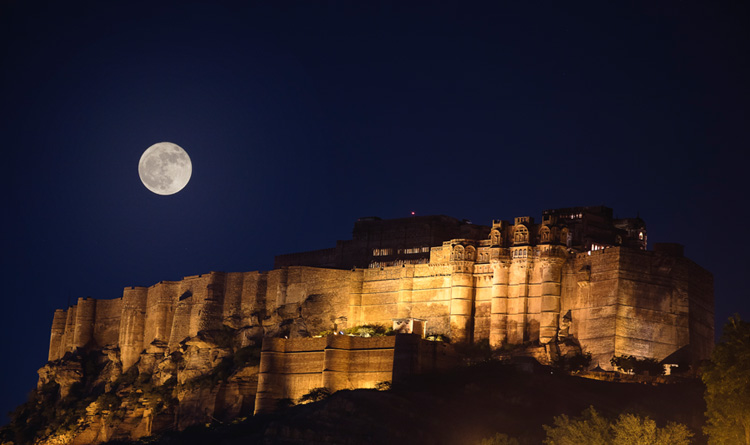
Mehrangarh Fort’s massive facade exudes brilliance even under the moonlight.
City Palace of Jaipur
In the heart of Jaipur’s Old City, the vast complex known as City Palace remains as a beautiful vestige of Rajasthani and Mughal architecture. Its impressive buildings and courtyards were formed during different eras. Hence, the outer walls of the palace had been rebuilt and widened over centuries.
Mubarak Mahal, or the Welcome Palace, is a brilliant fusion of Eastern and Western designs prominent in its colonnades. Inside is a museum that features a priceless royal wardrobe collection. Across the courtyard from Mubarak Mahal is The Armoury within Maharani’s Palace. The best collection of weapons in the country is found here.
Amidst the inner courtyards are Chandra Mahal, a seven-storey citadel, and Pritam Niwas Chowk where four elaborate gates represent the four seasons: Lotus Gate for summer, Green Gate for spring, Peacock Gate for autumn, and Rose Gate for winter. While a great portion of the City Palace is open to the public, some parts are restricted since descendants of the royal family still reside here.
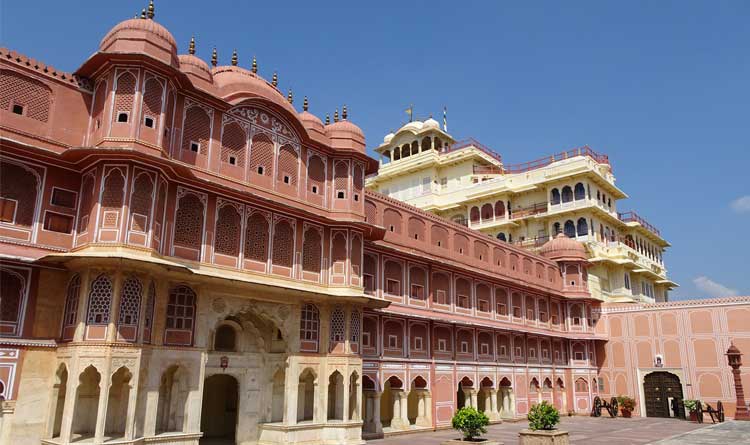
The vast City Palace of Jaipur comprises of impressive buildings and courtyards formed over centuries.
City Palace, Udaipur
Maharana Udai Singh and his generations of successors established the largest palace complex in Rajasthan known as the City Palace. This superb heritage of the Indian royals across many centuries blends traditional architecture with Western influences, making it a wondrous display of artful innovation.
Eleven amazing palaces are located inside City Palace, and while these have been built across 400 years by several rulers, they all kept a mindful eye on details and honoured their predecessors by maintaining the resemblance of the structures. Hence, their homage stood the test of time and the palace appears in majestic unison.
Amar Vilas is among the finest attractions in City Palace for its hanging gardens amidst fountains and terraces. It also lends an enchanting view of the serene Lake Pichola below. Badi Mahal, the central palace, sits on a natural rock formation above the palace grounds. A swimming pool inside the palace was then a location to celebrate Holi festival.
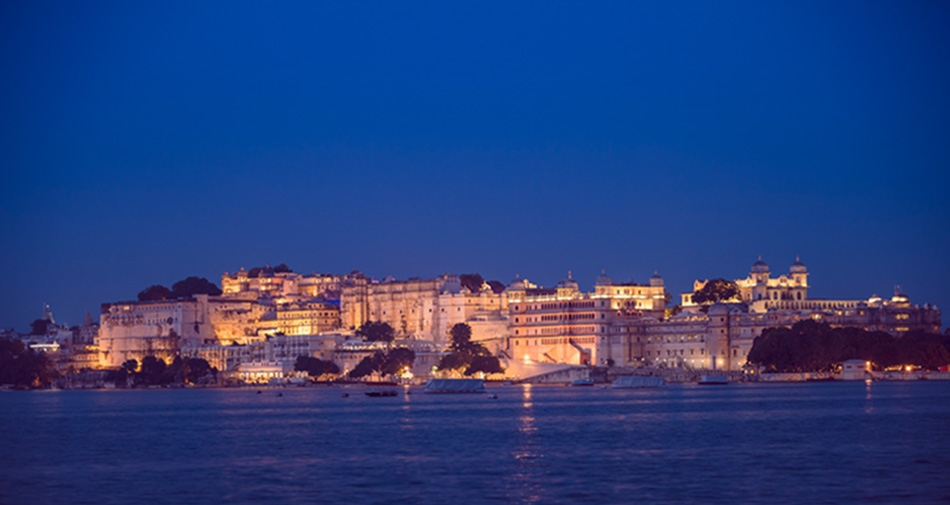
A sweeping view of City Palace, Udaipur at night across Lake Pichola.
Taj Mahal
Taj Mahal, the most famous attraction in all of India, belongs to the Seven Wonders of the World. Mughal emperor Shah Jahan dedicated this massive white-marble mausoleum for his most beloved wife Mumtaz Mahal.
It took 20 years to complete this exquisite jewel of Muslim art. Many historical records reveal that over 20,000 workers from India and neighbouring countries were enlisted to complete the unprecedented building. While white marble is the prominent material in the Taj Mahal’s construction, semiprecious stones such as amethyst, jade, and turquoise are inlaid in the charming interior design.
The Taj Mahal towers over the Yamuna River in Agra, Uttar Pradesh. It’s accessible from any part of the country. Hundreds of visitors try to get a glimpse of the Taj Mahal starting from sunrise because its walls appear to change shades throughout the day.
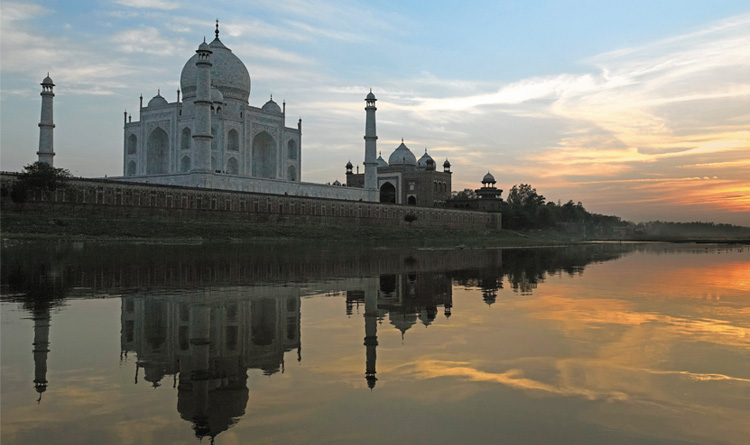
Taj Mahal, the exquisite jewel of Mughal architecture, is one of the Seven Wonders of the World.
Uncover more opulent destinations in India through its official tourism website, incredibleindia.org.



